There are 4.55 billion years, dust of the ancient giant stars form the protosolar nebula, they are rotated around what will become our sun. The Earth is not yet established.
The disk surrounding the proto-sun shrinks and heats from birth when its size reaches 200 astronomical units (AU), it begins to solidify and the atoms stick to each other to form grains of material. Thus sets up the accretion phenomenon that will lead to the formation of planets.
So dust grains condense, gravity increases, space dig, attracting more and more objects, large and small, which collide with each other. Over time a huge sphere covered with incandescent lava appears. At that time, the young Earth looks like a huge rock ball melting constantly bombarded by millions of objects more or less large that cross its orbit.
Throughout its history, the Earth has left traces that have allowed us to define the characteristics epochs marked by geological eons.
Before arriving at the man, evolution is passed by microorganisms, external skeleton animals in the seas, fish, marine and terrestrial reptiles, plants, insects, dinosaurs, mammals and primates. All these phases of evolution were interspersed by geophysical, climatic and volcanic crises more or less visible in the geological layers. | | Today we know identify biological crises during fossil time and we see that every crisis, from the smallest to the largest, has led to losses in biodiversity. These losses are visible on the biodiversity curve conducted in 2005 by Robert A. Rohde & Richard A. Muller (attached image).
The Earth is only half of his life and future geological eras are still very long.
Geologic time extend today to there 4.5 billion years, the time of the birth of the Earth. This story begins with the first of four geological eons, the Hadean that lasted ≈700 million years, then comes the Archean (≈1300 my), the Proterozoic (≈ 2000 my) and ends with the Phanerozoic (≈ 540 my).
The best defined eras naturally fall over the last million years the precision of datations decreases with ancient times but to paleontologists, the most accurate dating unit is the million years.
Paleontologists studying the fossil remains of the past, found in sedimentary rocks, to classify, count the missing fossil species, but also to understand the evolution of living beings, their environment and to fix the geological epochs of our planet.
Species live on average 1 million years, and then they disappear or transform into another species. It is in the Phanerozoic that biodiversity explodes despite five major disasters.
| | 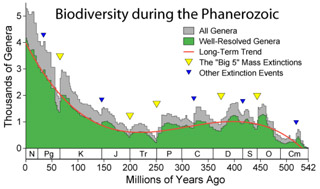 Image: Evolution of the number of genera (set of species) during the Phanerozoic, according to a 2005 study by Robert A. Rohde & Richard A. Muller (Department of Physics and Lawrence Berkeley Laboratory). The diversity of life seems to fluctuate during the Phanerozoic, this curve shows the apparent changes in marine biodiversity throughout the 542 million years of the Phanerozoic. There are 3 eras in the Phanerozoic, the primary era (542-250 my), the Mesozoic era (250-65 my) and Tertiary (65 my to now). These eras are marked by great mass extinctions, especially one that took place there are 250 my and that took place there are 65 ma. Since the last mass extinction there are 65 my, life has never been more diverse than today. |
The most interesting of the great geological eras for biodiversity is the most recent, the Phanerozoic.
The Phanerozoic (Greek phaneros, "visible" and zoon, "animal") is the era of the appearance of small animals, fish and plants. This aeon covers 542 million years of Earth history. Indeed it is in the Cambrian, the first of six periods of the Paleozoic appear the small shells animals, foraminifera.
Foraminifera, highly diversified, are abundant for hundreds of millions of years, which explains their ecological and scientific importance. Indeed, it is through these fossils from the past that to paleontologists count families, genera and extinct species.
Though the species live on average a million years before disappearing or transform into another species is counting biological genera, i.e. sets of species that share many similar characters that scientists can estimate the diversity of life over long periods. They base this on the first and last appearance of 36,380 genera (see note) stored in the Sepkoski Compendium 2002 (collection of marine animal genera compiled by Sepkoski and his associates at the University of Chicago).
The Phanerozoic is the period where biodiversity has exploded.
In the early Phanerozoic continental masses were grouped together in a supercontinent that to paleontologists call Pangea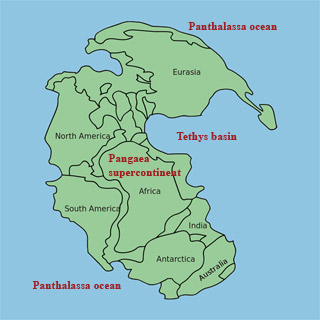 . Pangaea was surrounded by a vast ocean called Panthalassa. In the hollow of the crescent formed by Pangea was another ocean called Tethys. . Pangaea was surrounded by a vast ocean called Panthalassa. In the hollow of the crescent formed by Pangea was another ocean called Tethys.
During the Phanerozoic, the gigantic internal forces of the Earth will break the supercontinent, Pangea in continental plates by deriving these plates to their current location. Earth is the only planet to have an active tectonic plates and all the power is concentrated at plate boundaries.
The forces in play to move a dozen rigid lithospheric plates from 80 to 100 km thick, on thousands of miles away are considerable, and the energy released is in the image of large igneous provinces. A large igneous province is a vast region, a continent section, composed of basalt layers from a colossal volcanic expulsion.
NB: the biological genus group a set of species that share many similar characters. Any living or having lived species (animal, plant, fungus, bacteria...) is attached to a genus. Today it is estimated that more than 300,000 genera. | | These rock liquid streams, not explosives were released for tens of thousands of years, huge amounts of gas suspected be the cause of the mass extinctions of the past.
For example, the Deccan Traps in the large igneous province in western India, is a stack of lava flows from 10 to 150 meters thick, the total height of the stack reaches 2400 m in the western part. The total volume is 3 million km3, which corresponds to a lava thickness of 6 km throughout France. Eruptive episodes have followed for hundreds of thousands of years up to a million years to form traps. To extract that amount of lava from the depths of the Earth, volcanologists estimate that it takes about 10 times more melted rock material and the melted volume would be 30 million km3, i.e. a sphere of about 200 km radius within the Earth's mantle. This gives an idea of the dynamics of the interior of the Earth, of the power of convective engine of plate tectonics. The Deccan Traps were formed there 60 to 68,000,000 years, which corresponds to the Cretaceous-Tertiary crisis (KT).
There are even more gigantic traps that the Deccan Traps. There are about 205 million years ago, the igneous central Atlantic province at the time covered a total volume of 7 million km3. These traps are located today in West Africa along the east coast of America, Guyana, Venezuela and Portugal.
And what of the Siberian traps, even more monstrous, they have sprung up there 250 million years and correspond to less than a million years almost to the greatest biological crisis of all time, mass extinction of the Permian-Triassic.
During the Permian-Triassic crisis, 55% of families have disappeared, which corresponds to 80% of genera and 95% of species. The extinction was almost complete, but life has picked up again until the next crisis. Geological eras are defined by these sudden changes in the evolution of wildlife.
In the fluctuation of the evolution of the genera of marine biodiversity (attached image), we could see a certain regularity, a decrease of life with a periodicity of about 62 million years. It is tempting to believe that this may be due to chance, but experts do not agree on the causes of the small and large extinctions. Many causes are advanced, astronomical processes, geophysical, observational bias, all on the border between geophysics, climate evolution, the exhalation of an extremely intense volcanism, meteoritic bombardment, the process of evolution of life, or an accumulation of all these causes in a time "very short" on a geological scale. | | 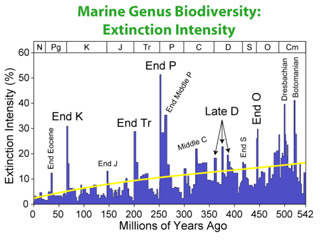 Image: Intensity of mass extinctions in the Phanerozoic. The five major disasters in the history of the Earth occurred at the end of the Cretaceous (End K) at the end of the Triassic (End Tr) at the end of the Permian (End P) in the late Devonian (Late D) and at the end of the Ordovician (End O). Credit image: GNU Free Documentation License.
| Major biological crisis |
Families |
Genera |
Species |
| |
|
|
|
Ordovician
(≈ −450 million years) |
22% |
55% |
85% |
Devonian
(≈ −370 million years) |
22% |
50% |
75% |
Permian - Triassic
(≈ −250 million years) |
55% |
80% |
95% |
Triassic - Jurassic
(≈ −205 million years) |
22% |
50% |
75% |
Cretaceous - Tertiary
(≈ −65 million years) |
15% |
45% |
75% |
Table: The five major disasters in recent Earth history (last 540 ma). These figures are probably biased, but they have the merit of bringing out the Permian-Triassic crisis like the one that was the most devastating and the Cretaceous-Tertiary crisis, the best known and yet least deadly. Successions of volcanic eruptions, ones after the others would they have had an impact on the evolution of biodiversity by participating in mass extinctions? |
 Automatic translation
Automatic translation

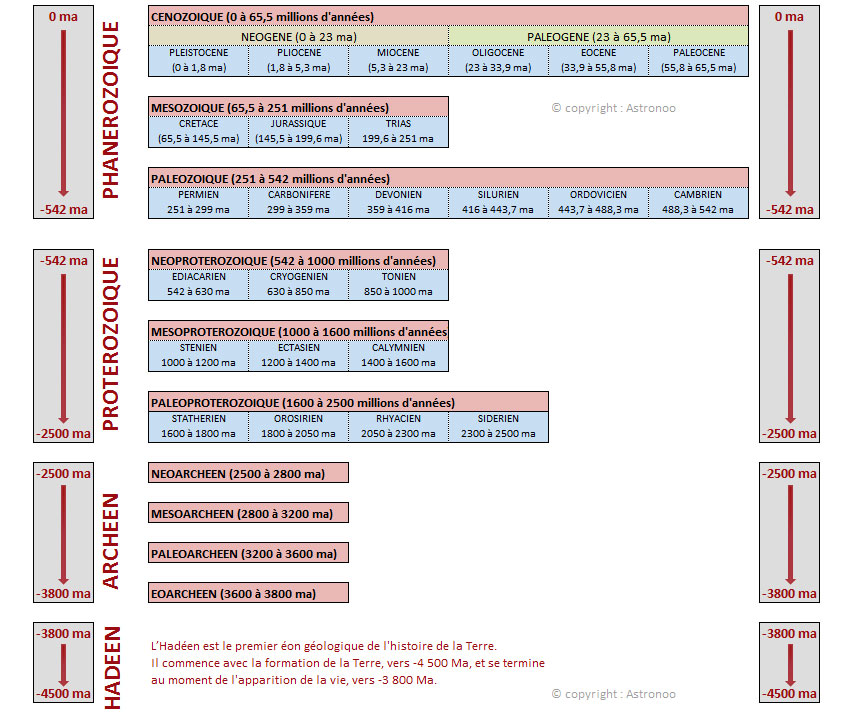




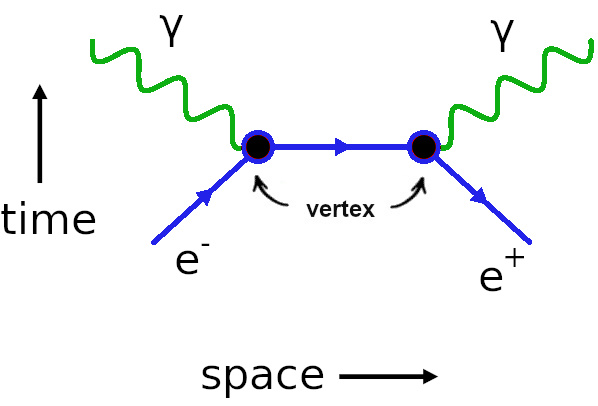 Feynman diagrams and particle physics
Feynman diagrams and particle physics
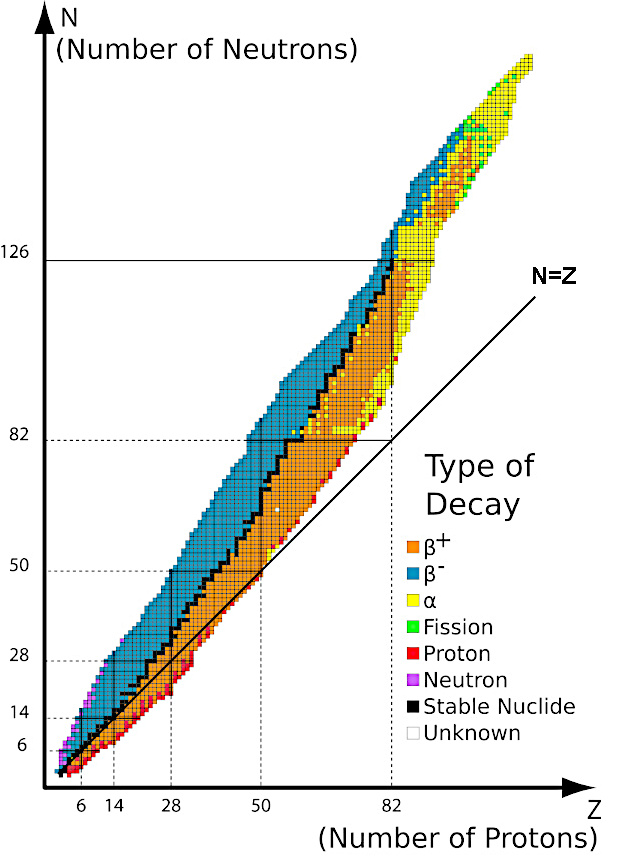 Stars cannot create elements heavier than iron because of the nuclear instability barrier
Stars cannot create elements heavier than iron because of the nuclear instability barrier
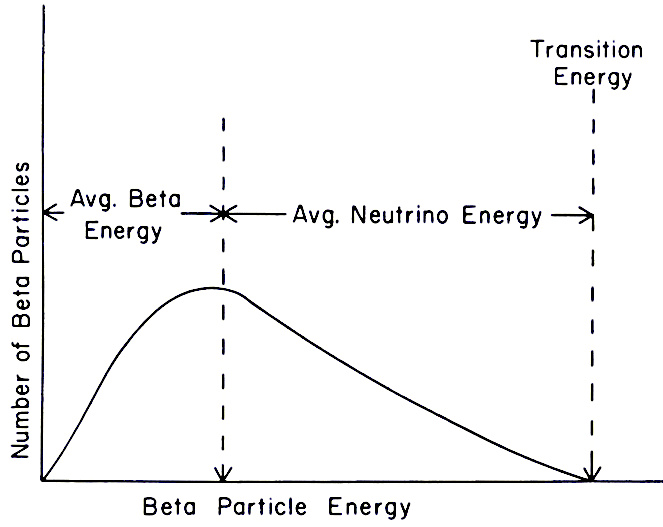 What is β radioactivity?
What is β radioactivity?
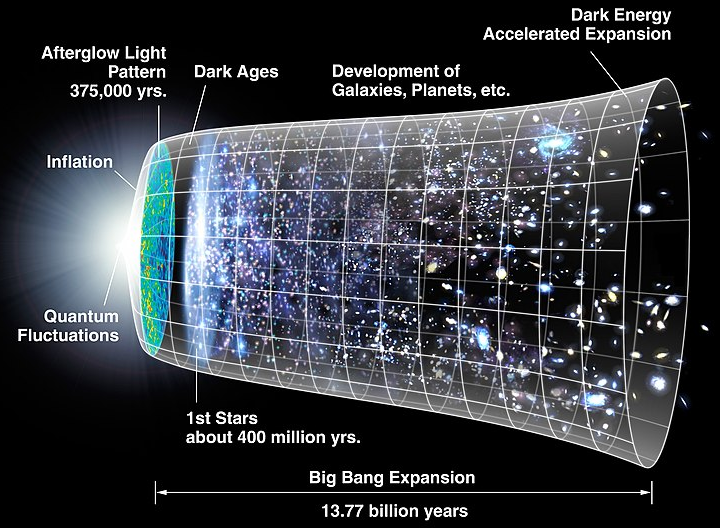 Planck wall theory
Planck wall theory
 Is emptiness really empty?
Is emptiness really empty?
 The Large Hadron Collider
The Large Hadron Collider
 The hadron is not a fixed object
The hadron is not a fixed object
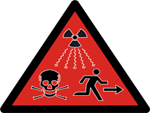 Radioactivity, natural and artificial
Radioactivity, natural and artificial
 The scale of nanoparticles
The scale of nanoparticles
 Schrodinger's Cat
Schrodinger's Cat
 Before the big bang the multiverse
Before the big bang the multiverse
 Eternal inflation
Eternal inflation
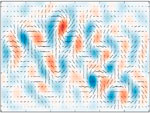 Gravitational waves
Gravitational waves
 Principle of absorption and emission of a photon
Principle of absorption and emission of a photon
 Beyond our senses
Beyond our senses
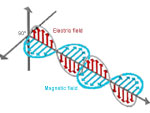 What is a wave?
What is a wave?
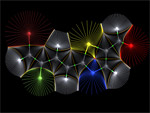 The fields of reality: what is a field?
The fields of reality: what is a field?
 Space in time
Space in time
 Quantum computers
Quantum computers
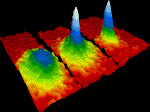 Bose-Einstein condensate
Bose-Einstein condensate
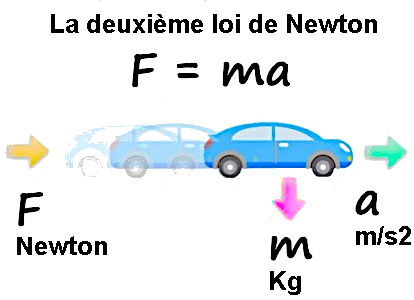 Equation of Newton's three laws
Equation of Newton's three laws
 Field concept in physics
Field concept in physics
 The electron, a kind of electrical point
The electron, a kind of electrical point
 Entropy and disorder
Entropy and disorder
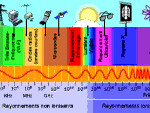 Light, all the light of the spectrum
Light, all the light of the spectrum
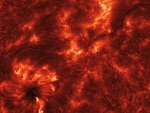 The infernal journey of the photon
The infernal journey of the photon
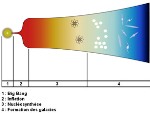 Mystery of the Big Bang, the problem of the horizon
Mystery of the Big Bang, the problem of the horizon
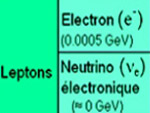 The neutrino and beta radioactivity
The neutrino and beta radioactivity
 Einstein's space time
Einstein's space time
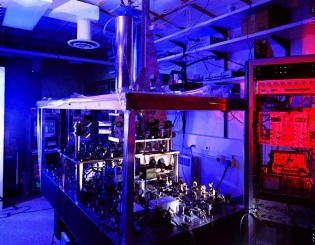 The incredible precision of the second
The incredible precision of the second
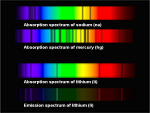 Why does physics have constants?
Why does physics have constants?
 Spectroscopy, an inexhaustible source of information
Spectroscopy, an inexhaustible source of information
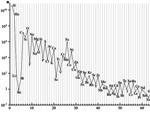 Abundance of chemical elements in the universe
Abundance of chemical elements in the universe
 Effects of light aberration
Effects of light aberration
 The size of atoms
The size of atoms
 The magnetic order and magnetization
The magnetic order and magnetization
 The quark confinement
The quark confinement
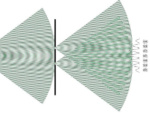 Superpositions of quantum states
Superpositions of quantum states
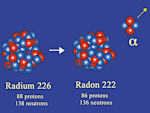 Alpha decay (α)
Alpha decay (α)
 Electromagnetic induction equation
Electromagnetic induction equation
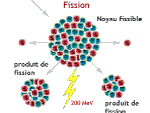 Nuclear fusion, natural energy source
Nuclear fusion, natural energy source
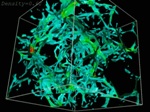 Does dark matter exist?
Does dark matter exist?
 Non-baryonic matter
Non-baryonic matter
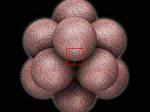 The mystery of the structure of the atom
The mystery of the structure of the atom
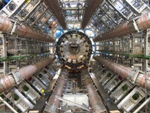 The mystery of matter, where mass comes from
The mystery of matter, where mass comes from
 Nuclear energy and uranium
Nuclear energy and uranium
 The Universe of X-rays
The Universe of X-rays
 How many photons to heat a coffee?
How many photons to heat a coffee?
 Image of gold atom, scanning tunneling microscope
Image of gold atom, scanning tunneling microscope
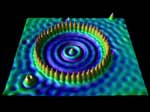 Quantum tunneling of quantum mechanics
Quantum tunneling of quantum mechanics
 Entropy and its effects, the passage of time
Entropy and its effects, the passage of time
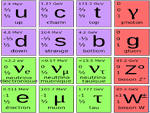 The 12 particles of matter
The 12 particles of matter
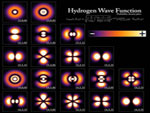 The atomic orbital or image atom
The atomic orbital or image atom
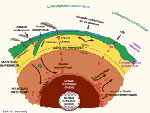 Earth's radioactivity
Earth's radioactivity
 The Leap Second
The Leap Second
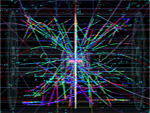 The vacuum has considerable energy
The vacuum has considerable energy
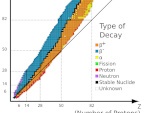 The valley of stability of atomic nuclei
The valley of stability of atomic nuclei
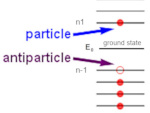 Antimatter and antiparticle
Antimatter and antiparticle
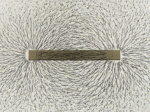 What is an electric charge?
What is an electric charge?
 Our matter is not quantum!
Our matter is not quantum!
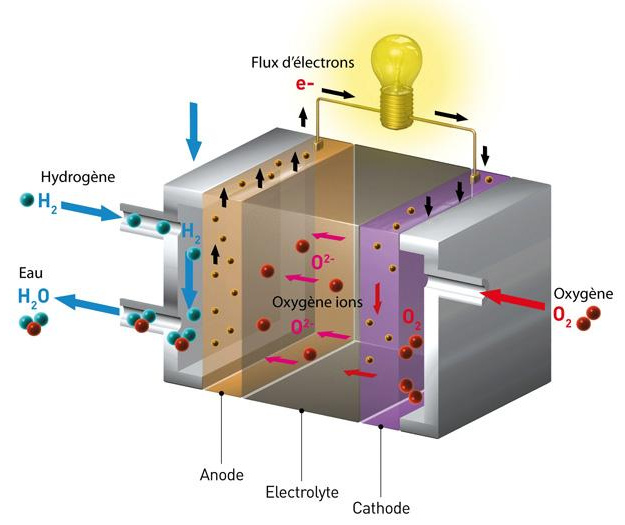 Why use hydrogen in the fuel cell?
Why use hydrogen in the fuel cell?
 The secrets of gravity
The secrets of gravity
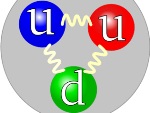 E=mc2 explains the mass of the proton
E=mc2 explains the mass of the proton
 Image of gravity since Albert Einstein
Image of gravity since Albert Einstein
 Einstein's miraculous year: 1905
Einstein's miraculous year: 1905
 What does the equation E=mc2 really mean?
What does the equation E=mc2 really mean?
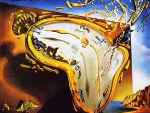 Special relativity and space and time
Special relativity and space and time